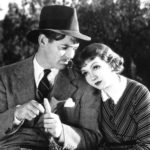In her recent Public Discourse interview with Ryan Anderson, Mary Eberstadt noted the important, yet often overlooked power of art and fiction to make rational arguments compelling. As she suggested, “Maybe fiction is helpful precisely in the areas where public debate seems most stale, and stalemated—places where a story will seem fresh by comparison, and where reflexive dismissal of a given perspective is less likely.”
Eberstadt is right. To show that, I explore here the power of art to advance moral argument, using Leo Tolstoy’s Anna Karenina. Specifically, I discuss how the book illuminates one of the most contested topics of debate today: marriage and the family, one of the novel’s major themes. Although he wrote long before the Sexual Revolution, Tolstoy presciently anticipates the tragic effects of such an ethic on human life. He masterfully brings out the many and complex dimensions of romantic love, with a style that can still resonate strongly with today’s readers.
Sexual Liberation’s False Promises: The Consuming Nature of Self-Serving Love
As the book’s first sentence asserts, “Happy families are all alike; every unhappy family is unhappy in its own way.” But as Tolstoy shows, unhappiness in any family can usually be traced back to self-serving love.
Start your day with Public Discourse
Sign up and get our daily essays sent straight to your inbox.The character in the book who most embodies such selfishness is Alexei Vronsky, a handsome aristocrat who revels in high society, devotes his energies to beautiful young women, and views marriage as “something alien, repellent, and, above all, ridiculous.” Vronsky first sets his sights on the somewhat naïve debutante, Kitty Shcherbatsky, and gets her to fall for him. He has a brief twinge of conscience over toying with Kitty, but concludes, “Well, what then? Oh, nothing. It’s good for me, and good for her.”
Although he wrote long before the Sexual Revolution, Tolstoy presciently anticipates the tragic effects of such an ethic on human life.
Vronksy’s interest in Kitty vanishes when he discovers a more tempting and challenging trophy: Anna Karenina, wife of a high-ranking government minister. Anna’s marital status does not deter Vronsky’s desire but rather heightens it.
Such disdain for marriage was common in Vronsky’s elite circles. On the one hand, there were those lower class, “stupid . . . people, who believe that one husband ought to live with the one wife whom he has lawfully married; that a girl should be innocent, a woman modest, and a man manly, self-controlled, and strong; that one ought to bring up one’s children, earn one’s bread, and pay one’s debts.” But Vronsky identifies with the upper class, the “real people” for whom “the great thing was to be elegant, generous, plucky, gay, to abandon oneself without a blush to every passion, and to laugh at everything else.”
Tolstoy explores how this self-serving, flawed understanding of love leads to duplicitous marriages and promiscuous relationships. Several of the book’s main characters reject marital and familial commitments, and their choices leave themselves and their families deeply broken. Vronsky’s and Anna’s affair, with its unrestrained and disordered desire, ultimately consumes them both, as Vronsky confesses: “As a man, I’m a wreck, . . . [stuck in] a wholly useless remorse never to be effaced.”
Sexual Liberation’s Forgotten Casualties: Children
The book also explores how sexual liberation affects children. To Vronsky, “a man is in duty bound to live for himself, as every man of culture should live,” and children are inconveniences that should not “prevent their parents from enjoying life.”
As Anna and Vronsky begin their affair, Anna’s son Seryozha haunts them. Vronsky often notices the child’s “bewildered glance fixed upon him, . . . as though the child felt that between this man and his mother there existed some important bond, the significance of which he could not understand.” Despite being pricked in their consciences by Seryozha, they refuse to reorder their desires; instead they flee to Italy.
Seryozha becomes a casualty of their self-serving love. His experience illustrates exactly what Them Before Us founder Katy Faust describes: “Children are at the mercy of adult decision-making in a world that increasingly believes adult happiness and personal fulfillment is the highest pursuit.” Likewise, The Ruth Institute‘s Jennifer Roback Morse’s critique of the Sexual Revolution could just as easily apply to Vronsky and Anna: “[They] have decided that their relationship with their sex partner is more important than their relationship with their child’s other parent.”
The Joy of Self-Giving Love and Sexual Fidelity
Alongside Vronsky and Anna’s libertine relationship, Tolstoy portrays a contrasting experience of marriage and family through the character Konstantin Levin. Levin’s thoughts on marriage are quite different from those of his aristocratic friends. Levin was “so far from conceiving of love for woman apart from marriage that he positively pictured to himself first the family, and only secondarily the woman who would give him a family.” While the elites saw marriage as a life accessory, “for Levin it was the chief affair of life, on which its whole happiness turned.”
While the elites saw marriage as a life accessory, “for Levin it was the chief affair of life, on which its whole happiness turned.”
Levin’s yearning for a family centers on his longtime friend Kitty, who, while she was being strung along by Vronsky, had declined Levin’s original marriage proposal. After an excruciating delay, Kitty and Levin finally reunite in one of the most moving parts of the novel, in a mutual display of forgiveness, humility, and self-giving.
As his marriage approaches, Levin revisits questions of God and faith that he had dismissed when he was single. After Levin expresses his doubts to the priest who will officiate at his wedding, the priest prods him to consider his role as a husband and father. If as a father Levin will be concerned for his children’s physical well-being, the priest asks, should he not be even more “anxious for [their] salvation, [their] spiritual enlightenment with the light of truth?”
The priest was right. When Kitty goes into labor with their first child, Levin’s spiritual quest reaches a critical moment. He cries out, “Lord have mercy on us! pardon us! aid us!” Tolstoy explains, “at that instant he knew that all his doubts, even the impossibility of believing with his reason, . . . did not in the least hinder his turning to God. All of that now floated out of his soul like dust. To whom was he to turn if not to Him in whose hands he felt himself, his soul, and his love?”
Living in a family brings you outside of yourself, into the joy of properly ordered love. Like Christ and his bride, the Church, Levin and Kitty were made complete (consummate) as they brought new life into the world.
Levin’s religious reawakening renders artistically what Mary Eberstadt argues in How the West Really Lost God: that religion and family form a mutually reinforcing double helix. In particular, she notes, “There is something critical about the natural family in the transmission of Christianity.” This is exactly what Levin experiences within the structure of family life: “something had happened that seemed extraordinary to him. He, an unbeliever, had fallen into praying, and at the moment he prayed, he believed.” Living in a family brings you outside of yourself, into the joy of properly ordered love. Like Christ and his bride, the Church, Levin and Kitty were made complete (consummate) as they brought new life into the world.
Uniting Beautiful Art and Rational Argument
As Eberstadt suggests, if we combine the beauty of art and the power of narrative with rational argument, we can convince people of the worthiness of marriage and family life more effectively than by argument alone. Anna Karenina is an example of how to do this. It beckons the reader to choose the better path, contrasting the destructive adultery of Vronsky and Anna with Levin and Kitty’s enchanting journey into the life of married love.
To make the case for monogamy requires more than just denouncing the Sexual Revolution and pointing to research; one must provide a more meaningful alternative. As Roback-Morse notes:
Natural law arguments for marriage are not enough to sustain the love of married couples. We can explain the value and benefits of marriage all day long to our non-religious neighbors. And of course, we should. But we should not delude ourselves into thinking that rational explanations are enough. Reason alone will not keep our marriages together when the going gets tough.
Art can help change our moral convictions because, as philosopher James K.A. Smith posits, we humans are not only “thinking things,” but also “embodied agents of desire or love,” that is, of eros. We are “fundamentally erotic creatures.” By integrating head and heart, thinking and feeling, beautiful art that reflects truth and goodness can rightly order our eros, especially by providing inspiring models for us to imitate.
Christians in particular should grasp this point, as no story appeals to both beauty and reason to greater moral effect than the Christian Gospel. The Christian ethic flows from a divine narrative more compelling than the greatest works of human art and literature. It is a real, historical story, of unsurpassed artistry and truth, that speaks to humanity’s universal experience of its fallenness and of our common desire for restoration and forgiveness. Even more, it presents a living person, Jesus Christ, the God who has taken on flesh, overcome death, and reversed our Fall by the indestructible power of his life.
Good art and stories help people to resonate with the truth. As we go about the work of improving our culture, let us unite art and argument in ways that reverberate deeply with humanity’s greatest and best desires, confident of Augustine’s belief that, “Thou hast made us for thyself, O Lord, and our heart is restless until it finds its rest in thee.”














